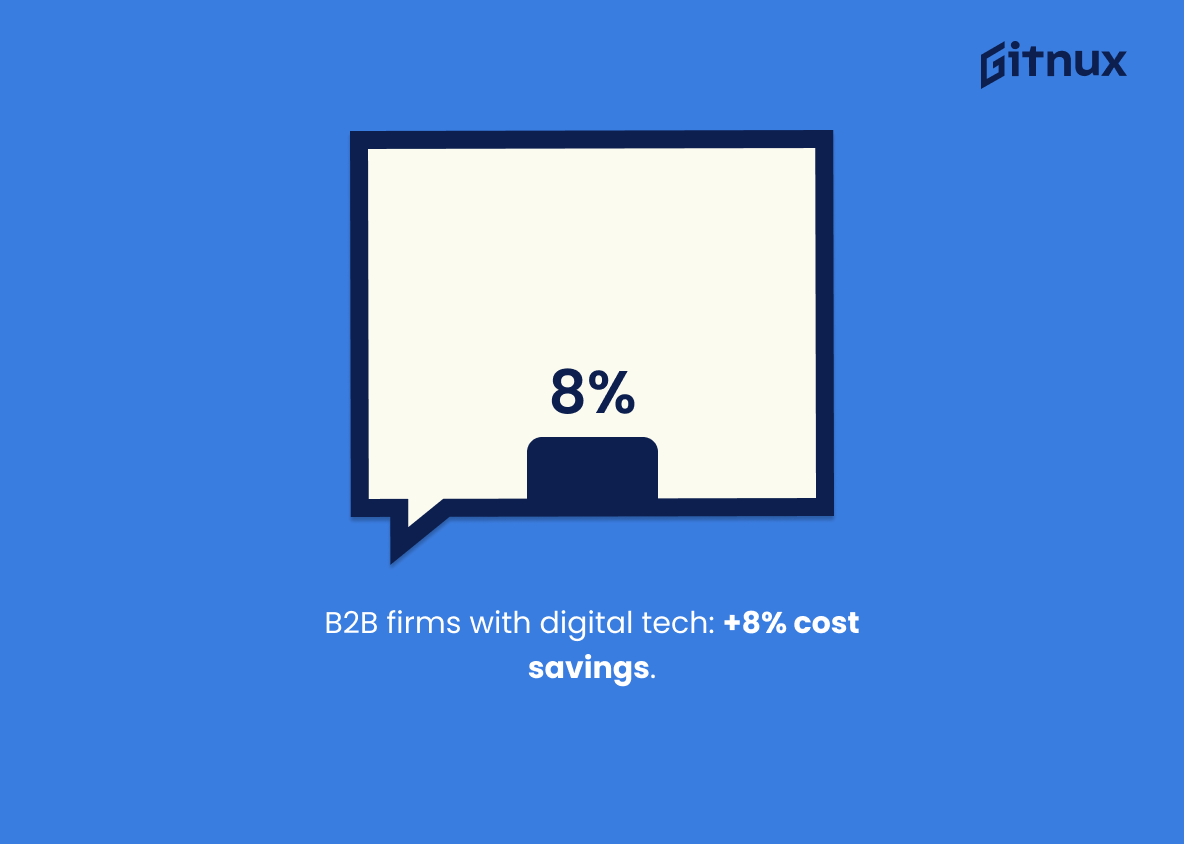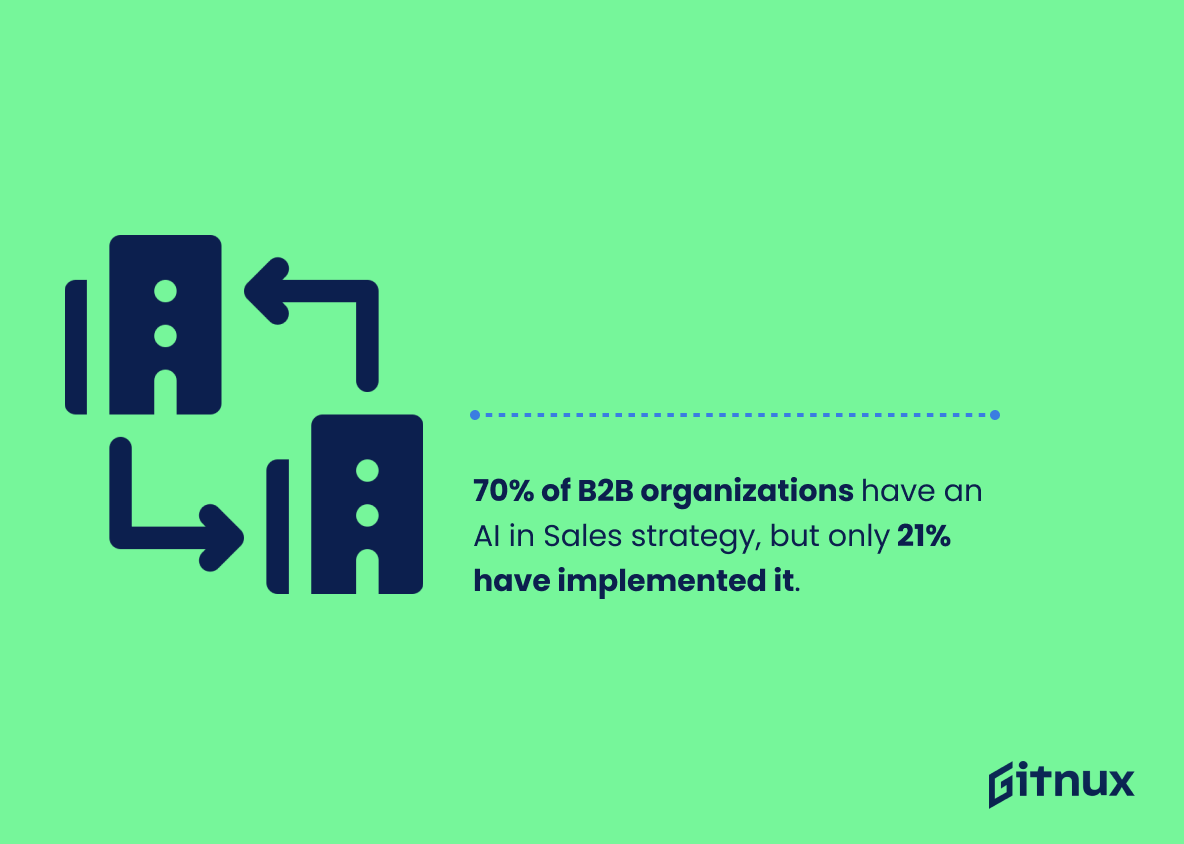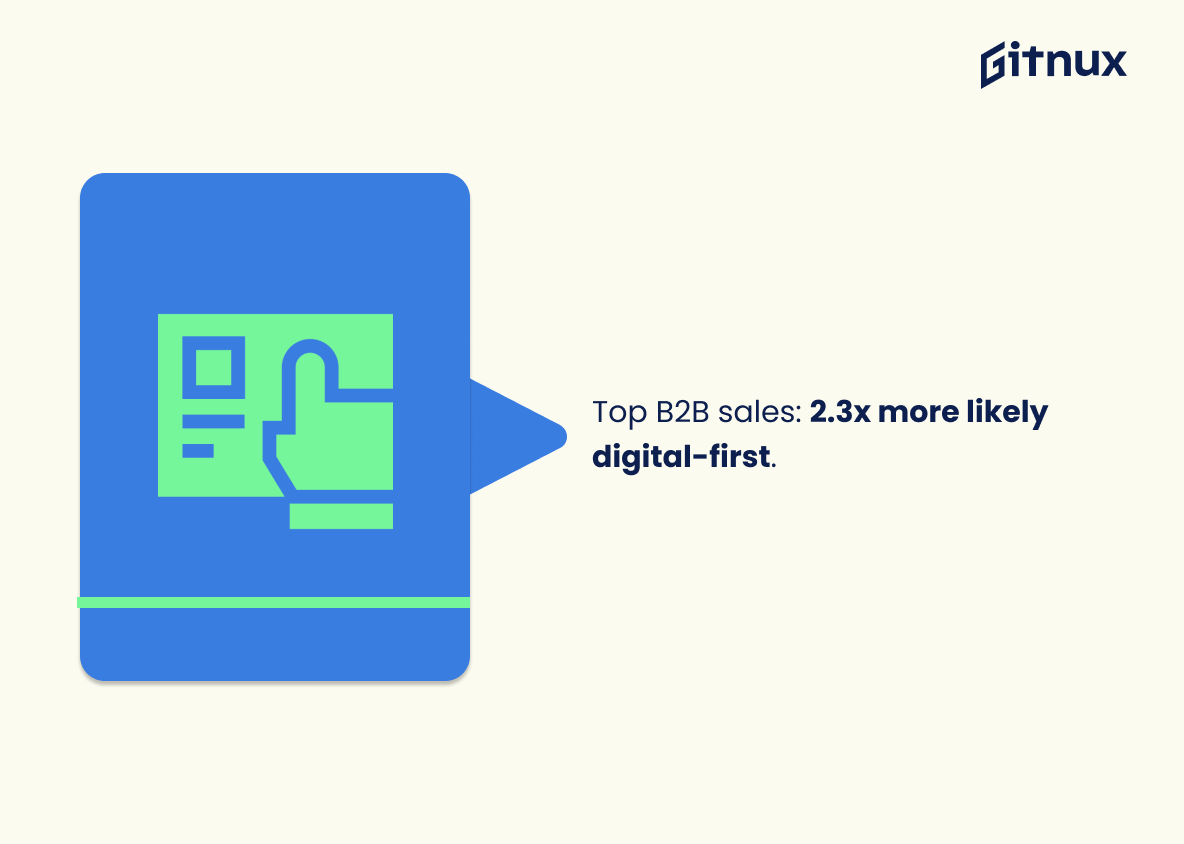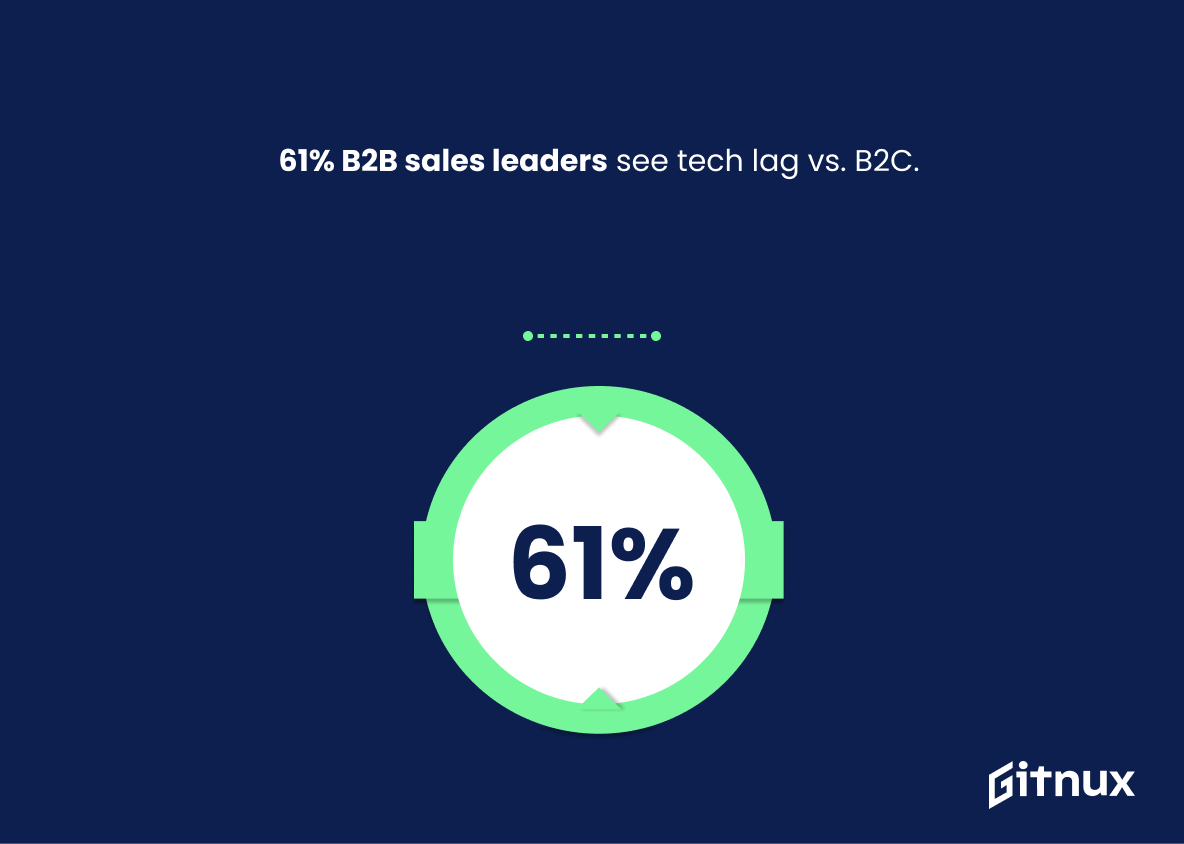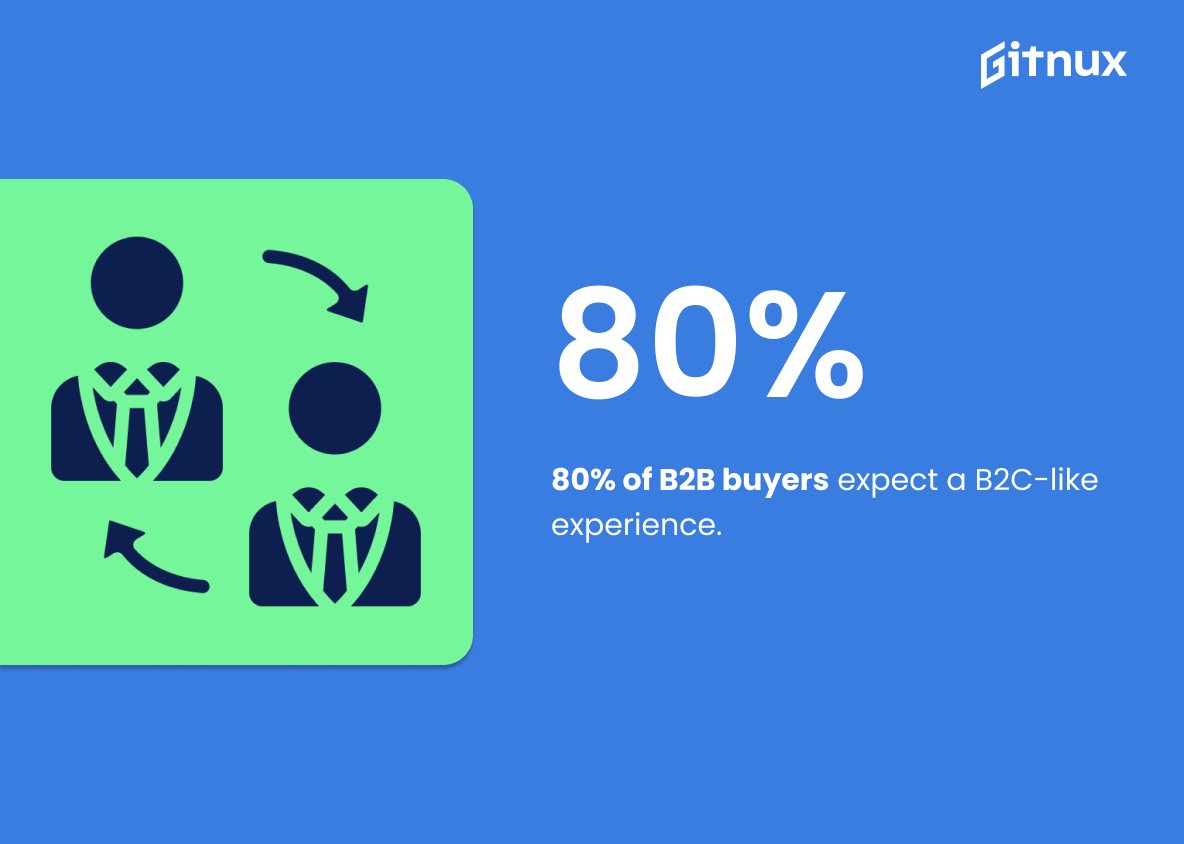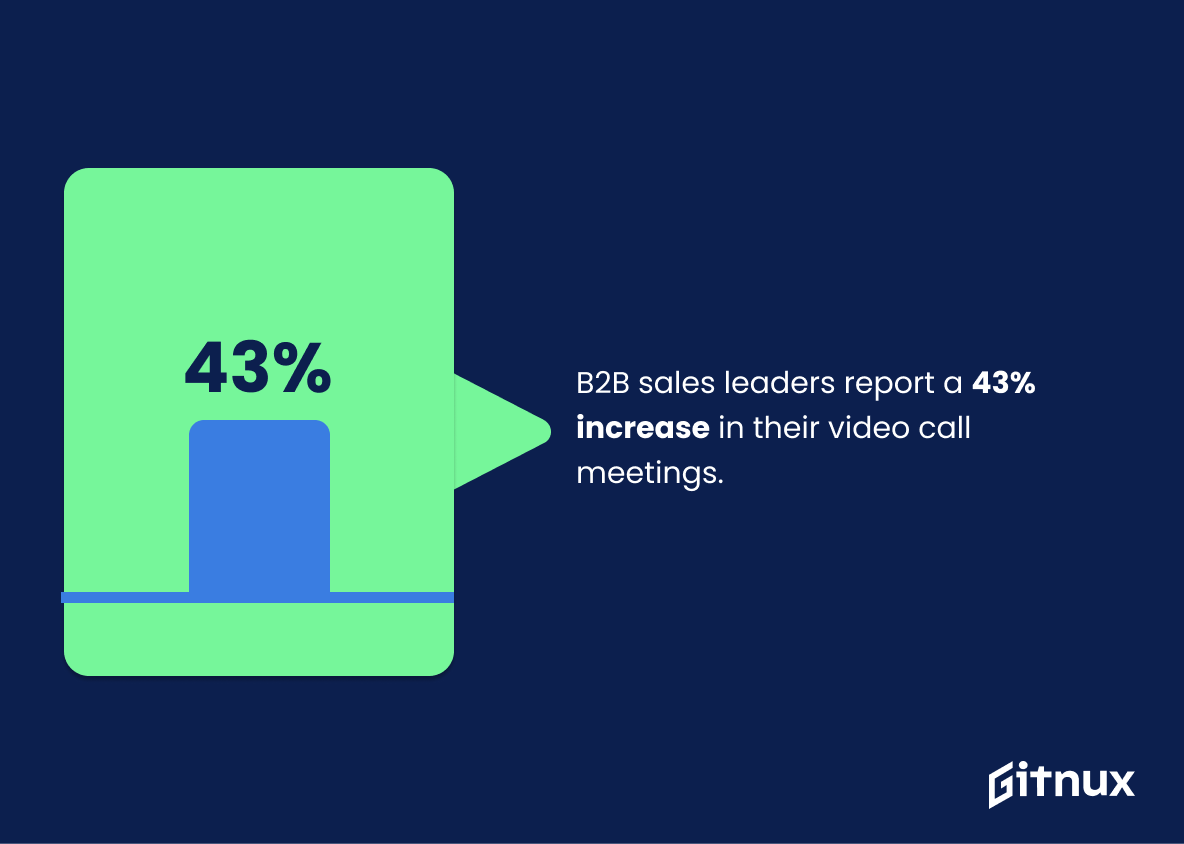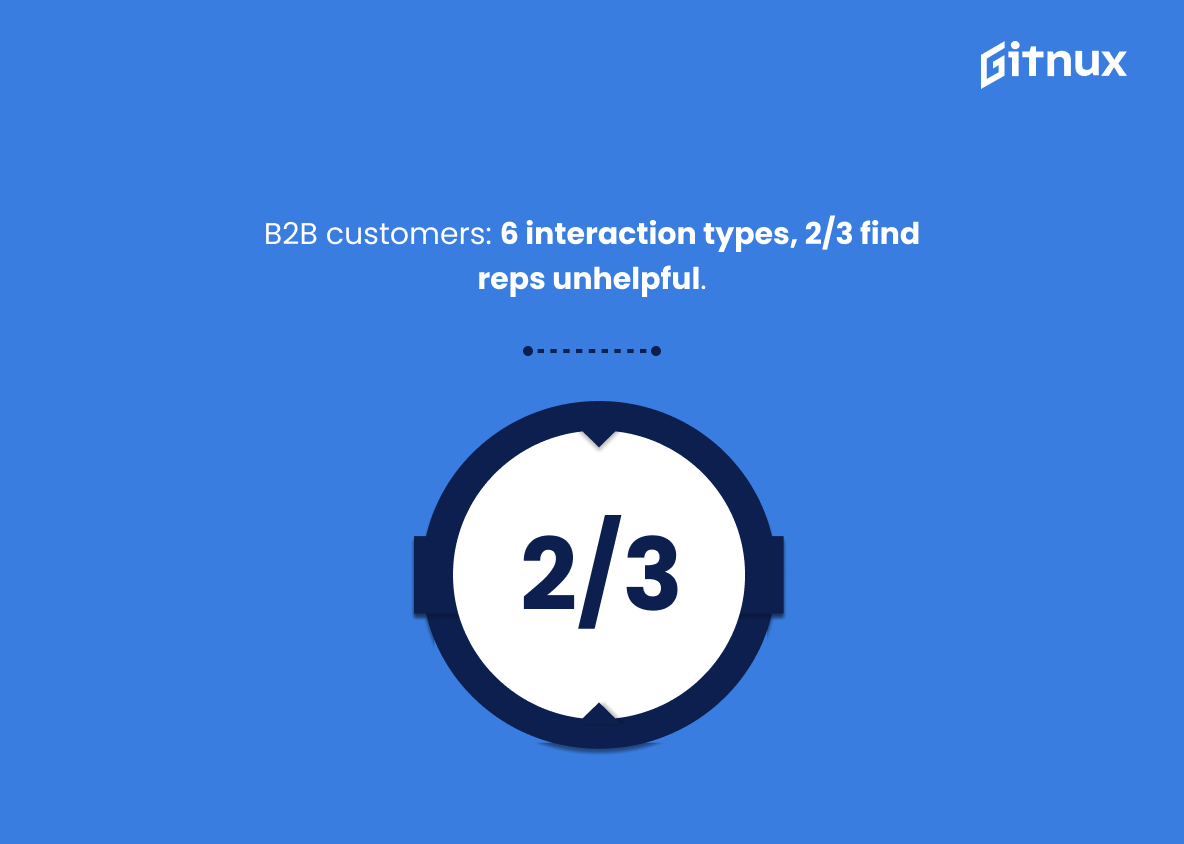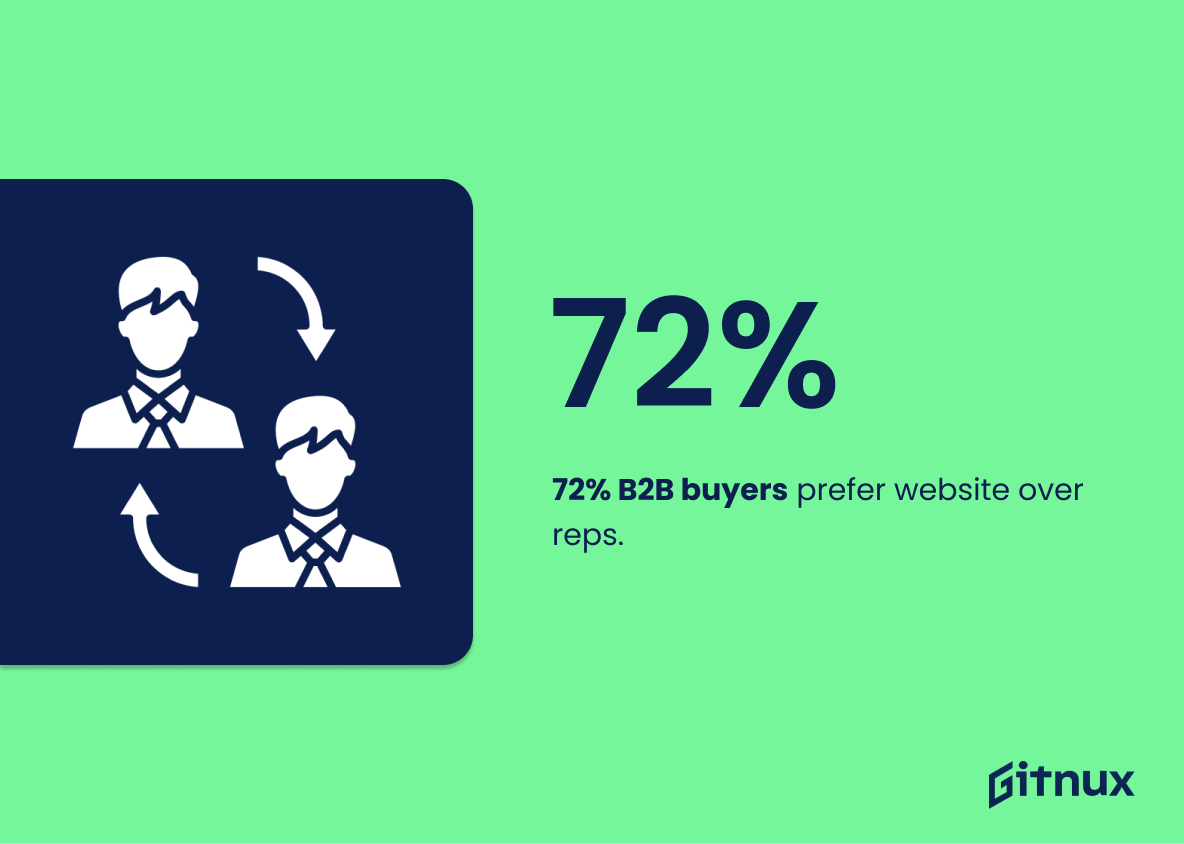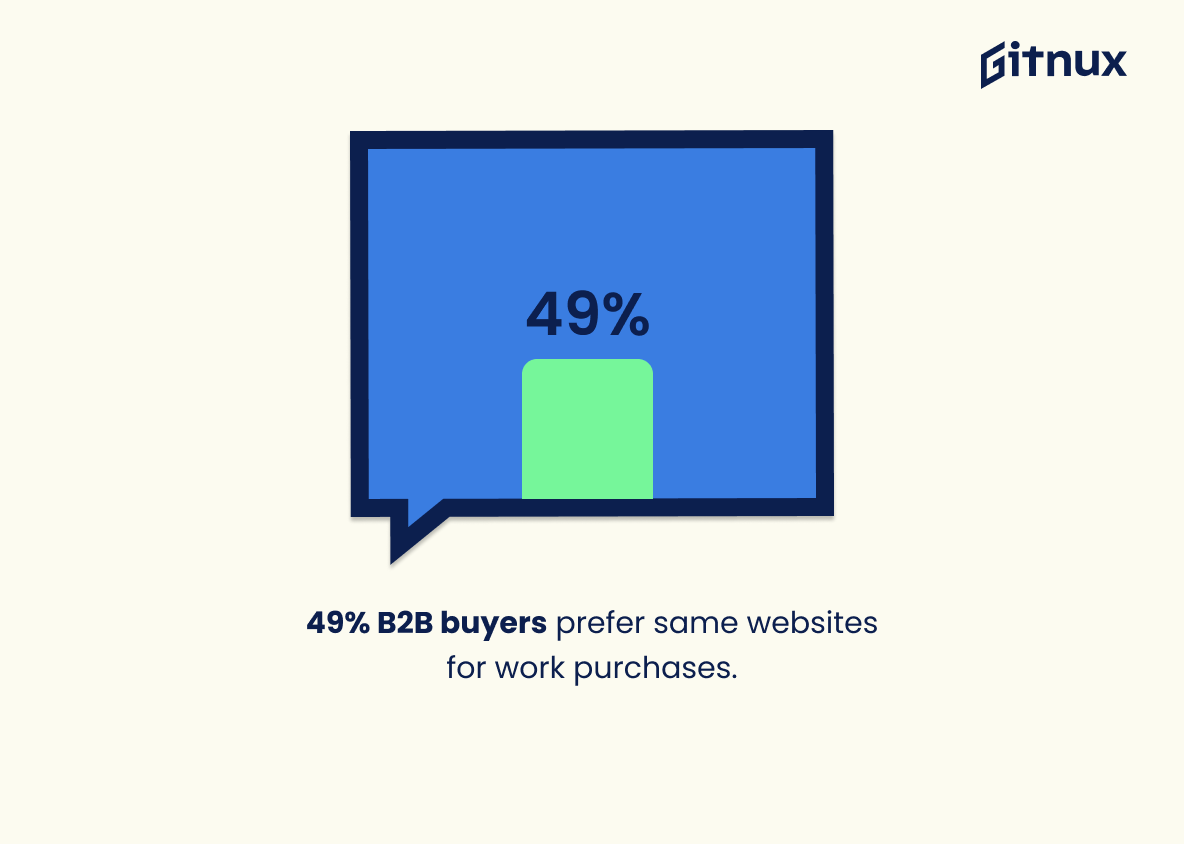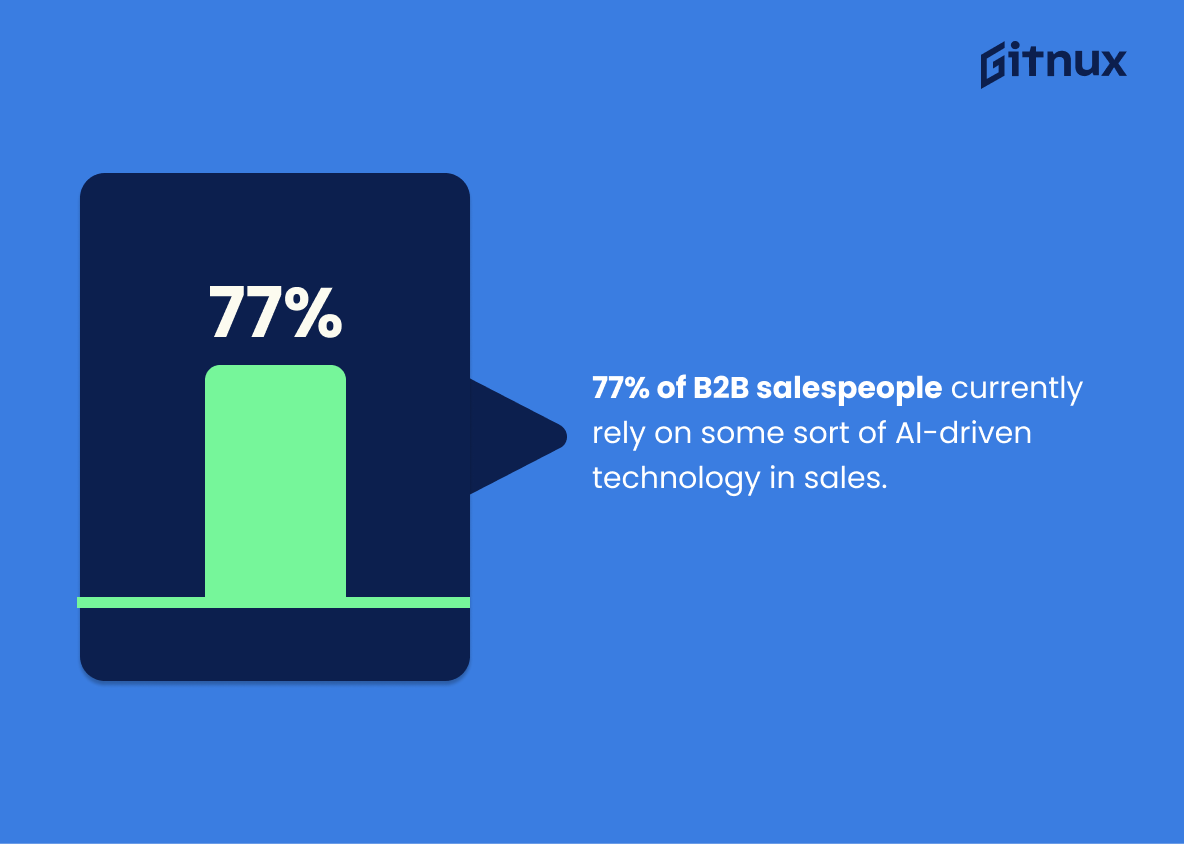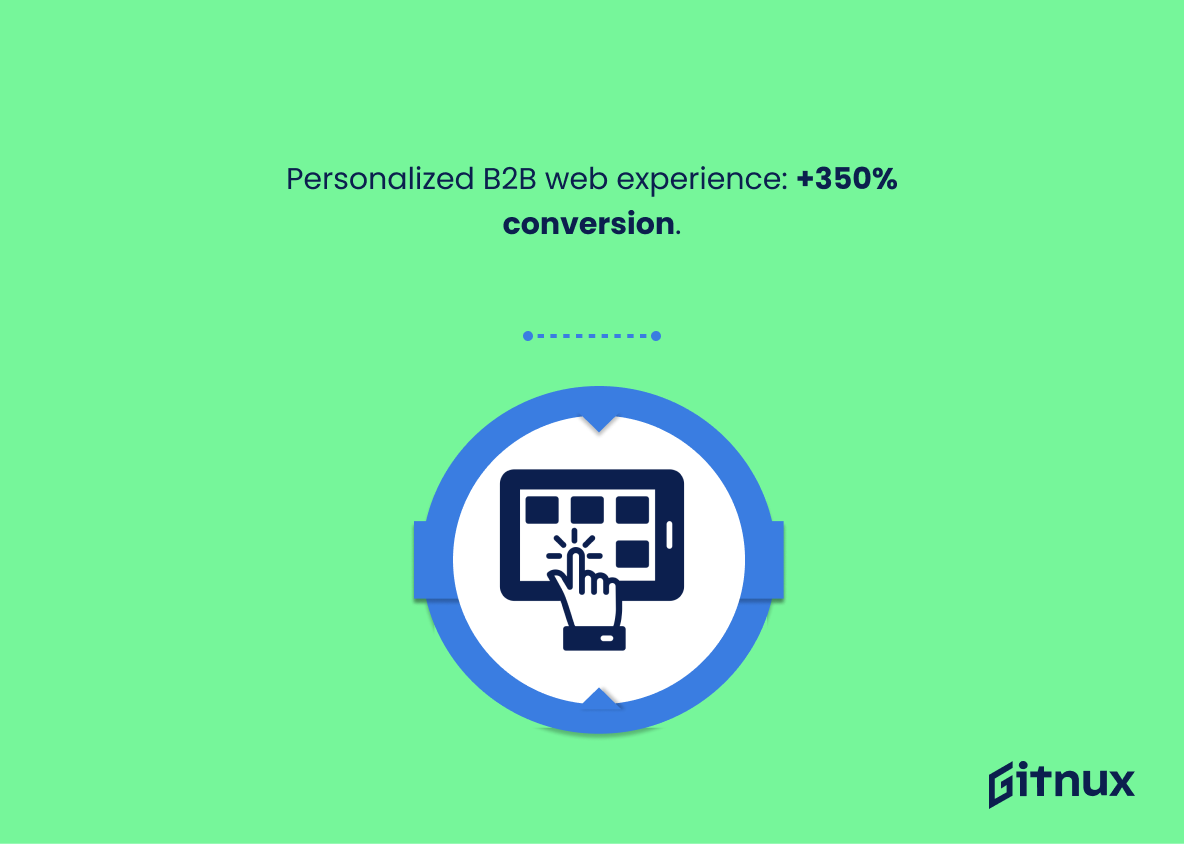The B2B sales landscape is constantly evolving, and it’s important to stay up-to-date on the latest trends. In this blog post, we’ll explore 20 statistics that provide insight into how B2B sales are changing in 2020 and beyond. From expected growth rates to customer expectations, these stats will help you understand what strategies your business should be focusing on for success.
This statistic is a testament to the immense potential of B2B sales, indicating that the market is set to experience tremendous growth in the coming years. It is a clear indication that businesses should be investing in B2B sales strategies now in order to capitalize on the lucrative opportunities that will be available in the future.
More than 55% of B2B buyers now depend on digital channels for making purchases.
This statistic is a clear indication that digital channels are becoming increasingly important for B2B buyers. It highlights the need for businesses to focus on digital strategies in order to reach and engage with their target audience. Furthermore, it suggests that businesses should be investing in digital marketing and sales tools to ensure they are able to capitalize on the growing trend of digital purchasing.
B2B Sales Statistics Overview
In-person visits have dropped by 68% while video call sales interactions are up by 69%.
This statistic speaks volumes about the current state of B2B sales. It shows that the traditional in-person sales interactions have taken a significant hit, while video call sales interactions have seen a dramatic increase. This indicates that businesses are adapting to the new normal of remote sales, and that video calls are becoming an increasingly popular way to conduct business.
B2B companies that use digital technologies have increased total cost savings by 8%.
This statistic is a testament to the power of digital technologies in the B2B space, demonstrating that companies that embrace these technologies can realize significant cost savings. It is a clear indication that businesses should consider investing in digital technologies to maximize their efficiency and profitability.
70% of B2B organizations have an AI in Sales strategy, but only 21% have implemented it.
This statistic is a telling indication of the potential of AI in B2B Sales. It shows that while many organizations recognize the value of AI in Sales, only a fraction have taken the steps to implement it. This highlights the need for more organizations to explore the possibilities of AI in Sales and take advantage of its potential.
High-performing B2B sales teams are 2.3 times more likely to have adopted a digital-first approach.
This statistic is a powerful indicator of the importance of a digital-first approach for B2B sales teams. It shows that teams who have adopted this approach are significantly more likely to be high-performing, suggesting that digital-first strategies are essential for success in the B2B sales space. This is an important point to consider when discussing B2B sales statistics, as it highlights the need for businesses to embrace digital strategies in order to maximize their sales potential.
61% of B2B sales leaders say their sector lags behind B2C in terms of using technology.
This statistic is a telling indication of the current state of B2B sales, highlighting the need for businesses to embrace technology in order to stay competitive. It serves as a reminder that, in order to remain successful, B2B sales leaders must be willing to invest in the latest technology and use it to their advantage. This statistic is an important factor to consider when discussing B2B sales statistics, as it provides insight into the current landscape of the industry.
80% of B2B buyers expect a B2C-like experience.
This statistic is a powerful reminder that B2B buyers are no longer content with a traditional, transactional sales experience. They are looking for a more personalized, customer-centric approach that mirrors the B2C experience. As such, it is essential for B2B companies to recognize this shift in buyer expectations and adjust their sales strategies accordingly.
34% of B2B sales reps believe virtual sales meetings are as effective as in-person meetings.
This statistic is significant in the context of B2B sales statistics because it demonstrates that a large portion of sales reps are confident in the effectiveness of virtual sales meetings. This indicates that virtual meetings are becoming increasingly accepted as a viable alternative to in-person meetings, and that businesses are beginning to recognize the potential of virtual meetings to increase efficiency and reduce costs.
Only 24% of B2B sales professionals consider their CRM systems effective.
This statistic is a telling indication of the state of B2B sales professionals’ reliance on CRM systems. With such a low percentage of professionals considering their CRM systems effective, it is clear that there is a need for improvement in the way CRM systems are used and implemented in the B2B sales process. This statistic is a reminder that there is still much work to be done in order to ensure that B2B sales professionals are able to maximize the potential of their CRM systems.
B2B sales leaders report a 43% increase in their video call meetings.
This statistic is a testament to the power of video call meetings in the B2B sales world. It shows that by utilizing video calls, sales leaders have been able to increase their productivity and efficiency, leading to a 43% increase in their meetings. This is an important statistic to consider when discussing the effectiveness of B2B sales strategies.
B2B customers typically use six different interactions types and almost two-thirds find the vendor reps are not helpful.
This statistic is a telling indication of the current state of B2B sales. It suggests that customers are having to use multiple interactions to get the help they need, yet still find the vendor reps unhelpful. This highlights the need for B2B sales teams to focus on improving customer service and providing helpful and timely assistance. It also serves as a reminder that customer satisfaction should be a priority for any B2B sales team.
72% of B2B buyers find buying from a website more convenient than buying from a sales representative.
This statistic is a powerful indicator of the changing landscape of B2B sales. It shows that the majority of buyers prefer the convenience of buying from a website over the traditional method of buying from a sales representative. This shift in preference has implications for businesses that rely on sales representatives to make sales, as they may need to adjust their strategies to accommodate the changing needs of their customers.
49% of B2B buyers prefer to make work-related purchases on the same websites they use for personal purchases.
This statistic is indicative of a larger trend in B2B buying behavior: the preference for convenience and familiarity. By showing that nearly half of B2B buyers prefer to make work-related purchases on the same websites they use for personal purchases, this statistic demonstrates that buyers are increasingly looking for a streamlined, user-friendly experience when making their purchases. This is an important insight for businesses to consider when developing their B2B sales strategies.
The average B2B buyer’s journey is 85% complete before engaging with a sales rep.
This statistic is a powerful reminder of the importance of understanding the customer journey in B2B sales. It highlights the need for sales reps to be proactive in engaging with potential customers early on in the process, as 85% of the journey is already complete before they even enter the picture. This means that sales reps must be well-versed in the customer journey and be able to provide value to potential customers at every stage. By understanding the customer journey, sales reps can ensure that they are providing the right information and resources to potential customers at the right time, helping to close more deals and increase sales.
sales st
77% of B2B salespeople currently rely on some sort of AI-driven technology in sales.
This statistic is a testament to the power of AI-driven technology in sales, demonstrating that the majority of B2B salespeople are taking advantage of its capabilities. It highlights the importance of AI-driven technology in the B2B sales process, and serves as a reminder that businesses should be investing in the latest technology to stay competitive. This statistic is an invaluable insight into the current state of B2B sales, and is essential for any blog post about B2B Sales Statistics.
Companies that personalize their B2B web experience can increase conversion rates by 350%.
This statistic is a powerful reminder of the importance of personalizing the B2B web experience. By customizing the web experience to the individual customer, companies can drastically increase their conversion rates, potentially leading to a significant boost in sales. This statistic highlights the potential of personalization and serves as a reminder of the importance of tailoring the web experience to the customer.
65% of sales leaders who outperformed their revenue targets use sales analytics tools compared to 48% who underperform their targets.
This statistic is a powerful indicator of the effectiveness of sales analytics tools in helping sales leaders reach their revenue targets. It shows that those who use such tools are more likely to exceed their goals than those who do not. This is an important point to make in a blog post about B2B Sales Statistics, as it highlights the value of leveraging technology to improve sales performance.
Conclusion
The statistics presented in this blog post demonstrate the importance of digital technologies and AI-driven tools for B2B sales. The data shows that B2B sales are expected to reach $20.9 trillion by 2027, with more than 55% of buyers now relying on digital channels for purchases. In addition, video call interactions have increased significantly due to COVID-19 while cost savings from using digital technologies can be up to 8%. Furthermore, 70% of organizations have an AI in Sales strategy but only 21% have implemented it so far. High performing teams are 2.3 times more likely to adopt a digital first approach and 61% believe their sector lags behind B2C when it comes to technology useage. Additionally, 92% of buyers are more likely purchase after reading trusted reviews and 80 % expect a similar experience as they would get from buying products online personally (B2C). Moreover 34 % consider virtual meetings just as effective as face-to-face ones while 24 % find CRM systems useful; 43 % report increase in video calls since pandemic started . Finally 72 percent prefer websites over reps , 49 percent like same sites used for personal shopping , 85 percent complete journey before engaging rep ; 77percent rely on some sort AI driven techs & 65 percentsales leaders who outperform revenue targets use analytics compared 48 underperformers . All these facts point out how important is adapting new strategies such us personalized web experiences which could lead into 350 per cent conversion rate increases or better product availability expectations among customers
References
0. – https://www.bcg.com
1. – https://www.go.forrester.com
2. – https://www.salesforce.com
3. – https://www.mckinsey.com
4. – https://www.bain.com
5. – https://www.forbes.com
6. – https://www.gartner.com
7. – https://www.b2bmarketing.net
8. – https://www.blog.youtube
9. – https://www.accenture.com
10. – https://www.resources.techtarget.com
ZipDo, cited June 2023: B2B Sales Statistics

